Imagine waking up one morning, stretching your arms overhead, and feeling a gentle ache in your back. For many, this isn’t just a fleeting discomfort; it’s a reminder that nearly 80% of adults deal with low-back pain at some point in their lives. Factors such as postural dysfunction and core weakness play a significant role in this widespread issue.
To combat the discomfort, people often search for solutions, wondering, “What 3 back exercises should I do?” Luckily, the answer is simpler than it seems. By focusing on only 3 back exercises that specifically target your core, you can pave the way to not just relief, but also a stronger, more resilient physique.
These exercises have been scientifically proven to reduce pain and enhance overall spinal health. In this article, we will delve into these essential movements. We’ll offer you the tools you need for a comprehensive 3 exercise back workout that can transform the way you feel and function in your daily life.
These exercises are not just for fitness enthusiasts; they are vital for anyone looking to enhance their quality of life while addressing back pain. To get started, you might want to visit this guide that helps you tailor your fitness journey. It’s never too late to invest in your back health—and your core will thank you!
Table of Contents
Understanding Core Strength and Its Importance
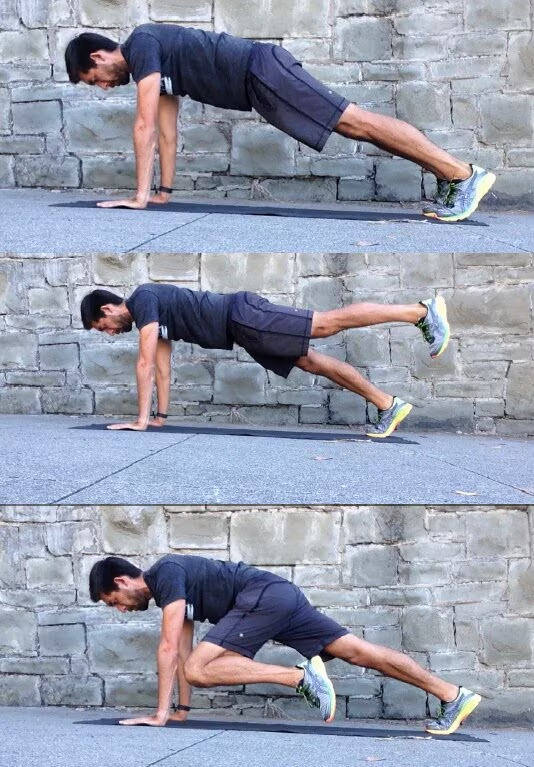
Core strength means having stable and strong muscles around the abdomen and spine. These muscles are key for good health, helping with balance and posture. People with strong core muscles are less likely to get hurt while doing sports.
Doing core exercises is key to building these important muscles. Many fitness plans don’t focus enough on core muscles, leading to weak strength and stability. Core exercises like planks, sit-ups, bridges, and using fitness balls help improve coordination in the abdominal and back muscles.
Having strong core muscles makes everyday tasks easier, like swinging a golf club or tying shoes. Weak core muscles can cause poor posture, back pain, and more muscle injuries. Studies show that strengthening core muscles can help with back pain and reduce the chance of falling. This makes these exercises good for both active and inactive people.
Core exercises also help with better movement and performance in sports. It’s important to do core-strengthening exercises regularly, like abdominal crunches and single-leg presses. To get stronger core muscles, do one set of each exercise with 12 to 15 reps.
Common Causes of Back Pain
Back pain is a top reason people visit doctors or miss work. It’s one of the most common health issues globally. Many factors, like muscle strain, bad posture, and wrong lifting, cause lower back pain.
Getting older also plays a role; back pain often starts around 30 or 40. Smoking can make things worse by causing herniated disks and reducing blood flow to the spine. Being overweight and not staying active also adds to the problem, highlighting the need for regular exercise to prevent back pain.
Doing low-impact exercises can help make back muscles stronger and more resilient. It’s important to strengthen both the abdominal and back muscles to prevent back pain. Avoid twisting or straining movements that can make things worse.
Studies show that some believe special shoes or furniture can ease back pain, but this isn’t true for everyone. Effective treatment usually includes exercise, staying at a healthy weight, and lifting correctly. These steps help prevent injuries and manage lower back pain.
How Core Strength Relates to Back Health
Many Americans struggle with back pain, and it gets worse as they get older. Things like losing bone mass, muscle stiffness, and spinal disc flexibility add to the pain. Keeping your core strong is key to supporting your back and avoiding pain.
Studies show that weak core muscles can lead to lower back pain. Core workouts help everyone, from athletes to those who sit a lot. Doing exercises like planks, bird dogs, and bridges strengthens your back muscles.
Using your core in everyday tasks, like lifting or standing right, is important for less pain. Focusing on core stability helps with chronic low back pain. Exercises that make your core stable can lessen pain and disability from back issues.
Core training is good for a healthy back. It works on muscles in the trunk, hips, and thighs. Strengthening these areas helps build a strong base for back health. Core stability training is key for avoiding injuries and improving life quality.
| Core Exercise | Core Stability Benefits | Impact on Back Health |
|---|---|---|
| Plank | Enhances endurance of trunk muscles | Improves posture, decreasing lower back strain |
| Bird Dog | Boosts balance and coordination | Supports spinal alignment, reducing back pain |
| Bridge | Strengthens glutes and hamstrings | Contributes to stability in the lower back |
| Cruise | Builds abdominal strength | Limits lower back pressure during movements |
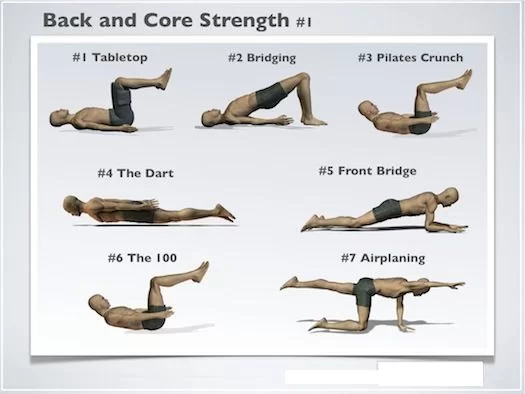
The Role of the Back Muscles in Core Stability
Back muscles are key to keeping the core stable, which is vital for the body’s function. They work with the abdominal and gluteal muscles to support movements and keep the spine aligned. The lumbar multifidus, quadratus lumborum, and gluteus maximus are some of these muscles. Knowing how they work helps in training these muscles, making the body more stable and lowering injury risks.
Studies show that strengthening these muscles is beneficial. Core Stabilization Exercises (CSE) help reduce pain and improve function in people with non-specific low back pain (NSLBP). These exercises led to a significant decrease in pain, as seen by a lower Visual Analog Scale (VAS) score.
Experts like Dr. Stuart McGill suggest doing the “McGill Big 3” exercises for full core engagement. These include the curl-up, side plank, and birddogs. Doing these exercises regularly can improve endurance and stability in the core.
Strengthening back muscles improves performance and functionality, as seen in better balance and proprioception after four weeks of exercise. Core stability helps with daily tasks and recreational activities, showing its importance for health. A strong back not only boosts physical health but also enhances athletic performance and reduces injury risks due to poor core support.
| Muscle | Function | Benefits of Strengthening |
|---|---|---|
| Lumbar Multifidus | Stabilizes the spine | Improves spinal alignment |
| Quadratus Lumborum | Supports lateral spine stability | Increases functional movement |
| Gluteus Maximus | Provides power during movements | Enhances overall strength and agility |
3 Back Exercises to Strengthen Your Core
Adding specific exercises to your routine can boost your core strength and back health. The Bird Dog exercise is a top choice for strengthening your core. It helps improve balance and coordination and works on key core muscles.
The Bird Dog Exercise
The Bird Dog exercise targets several core muscles and tests your balance and stability. It’s vital for strengthening muscles that support your spine. This makes it a key exercise for back health.
How to Perform the Bird Dog
Start in an all-fours position on the floor for the Bird Dog exercise. Keep your spine neutral. Then, extend one arm forward and the opposite leg backward. Hold it for a bit to engage your core, then switch sides. Do 10-15 reps on each side to strengthen your core and improve coordination.
Benefits of the Bird Dog for Core Stability
The Bird Dog exercise does more than improve coordination; it boosts core stability. It works on the hamstrings, glutes, abs, and back muscles. Strengthening these can help reduce back pain and make daily activities easier.
The Dead Bug Exercise
The Dead Bug exercise is great for improving core stability and strength. It helps with back pain recovery and strengthens the transverse abdominis muscle. This muscle is key for keeping the spine healthy. Here’s how to do the exercise and which muscles it works.
Steps to Execute the Dead Bug
- Lie on your back with arms extended toward the ceiling and legs raised at a right angle.
- Engage your core muscles, ensuring that your lower back remains flat against the ground.
- Lower one arm and the opposite leg toward the floor without allowing your back to arch.
- Return to the starting position and alternate sides.
- Repeat for 10-20 repetitions.
Key Muscles Targeted by the Dead Bug
This exercise targets the following muscles:
- Transverse Abdominis: Essential for maintaining core stability.
- Rectus Abdominis: Helps in flexing the trunk and stabilizing the pelvis.
- Erector Spinae: Vital for supporting the spine and maintaining proper posture.
Doing the Dead Bug exercise often can help strengthen your core and prevent back injuries. It’s a great move for any fitness plan.
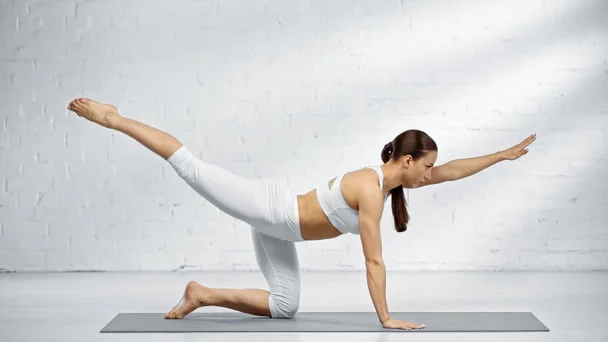
Glute Bridge: An Essential Core Exercise
The Glute Bridge exercise is key for boosting core strength and stability. It works the glutes, hamstrings, and lower back. This helps improve strength and posture.
Technique Tips for a Perfect Glute Bridge
To get the most out of the Glute Bridge exercise, follow these steps:
- Lie on your back with your knees bent and feet flat on the ground.
- Engage your core and squeeze your glutes.
- Lift your hips until your body forms a straight line from your shoulders to your knees.
- Hold this position for 20 to 30 seconds.
- Lower your hips back to the ground and repeat.
Start with 10 reps for beginners, then aim for three sets of 25 as you get stronger.
Why the Glute Bridge Is Beneficial for Your Core
The Glute Bridge strengthens the lower back, glutes, and hamstrings. These muscles are vital for good posture and preventing back pain. Adding bridge exercises to your routine boosts core stability and relieves back pain from poor posture.
Variations like single-leg bridges or using an exercise ball make the exercise more challenging. They help activate trunk muscles better. This means anyone can benefit from back exercises for glutes, no matter their fitness level.
- 【The Sportsroyals Squat Machine 】 A new trend to have cause traditional squats are too slow to be effective. Combining t…
- 【Butt Lifter】The Sportsroyals perfect home fitness equipment with squat form, shifts the weight back to your glutes, get…
- 【Full Body Workout】The Sportsroyals Squat Machine combines the features of the Row & Ride, making it the ideal for weigh…

- 💪 Core Workout Equipment: Wonder Core 2 has twice the amount of incredible exercises that you can do right in home, it g…
- 💪All-in-One Exercise Equipment: Wondercore 2 puts the focus on each part and blasts like a laser on your upper, middle, …
- 💪Ingenious Spring System: Wonder Core Two equipped with 2 springs, which can help you get back to your starting position…

- 🏅Multipurpose Abdominal Trainer: Transform any room into a mini home gym with our versatile ab trainer. In addition to b…
- 🏅Exceptional Spring System: Our ab trainer features two strong springs with protective covers, allowing the backrest to …
- 🏅Customized Comfort for Everyone: Designed with an ergonomic curve to support the spine, our ab crutch machine offers ut…

- 💪4-in-1 Home Gym Equipment: The secret is its ingenious patented transforming design, 4 different machines packed into o…
- 💪Multifunctional Workout Equipment: With just a single fitness equipment, you get to work every major muscle group, your…
- 💪Roman Chair Mode: It was designed to work your core, lower back, side abs, glutes, and hamstrings. Adjust and add to yo…

- Efficient Workout: This ab workout equipment is the perfect addition to your home gym. The ab core machine strengthens y…
- Premium Quality: This ab trainer is made of solid thickness steel frame, premium quility foam knee cushion and foam cove…
- Easy to Assemble & Store: Our abdominal trainer is easy to store and trnasport with foldable design. It can be used anyw…

Building a Balanced Back Exercise Routine
A good back exercise routine can boost your strength and posture. It’s key to know how to balance your workout, especially with core exercises. The back has four main parts: upper and outer lats, lower lats, middle back, and lower back. Each part needs its own exercises to grow strong and prevent injuries.
To get a balanced workout, mix exercises for these areas. Try the Bird Dog, Dead Bug, and Glute Bridge to make your muscles work better and keep your core stable. Here are some exercises for each back area:
| Back Region | Recommended Exercise | Reps |
|---|---|---|
| Upper/Outer Lats | Pull-Up | 8-12 |
| Lower Lats | Kettlebell Swings | 8-12 |
| Middle Back | Barbell Bent-Over Row | 6-10 |
| Lower Back | Deadlift | 6-10 |
When planning your back exercises, mix up the muscle groups you work on. Here are tips to make your routine better:
- Focus on correct form, engaging the intended muscle groups during each movement.
- Cycle through lower rep sets for strength and higher rep ranges for endurance.
- Consider varying your angles of attack for exercises to ensure a comprehensive workout.
Sticking to a back exercise routine can help ease chronic back pain. It can make life better. A balanced routine builds strength and keeps your back healthy.
The Benefits of Core Exercises for Everyday Activities
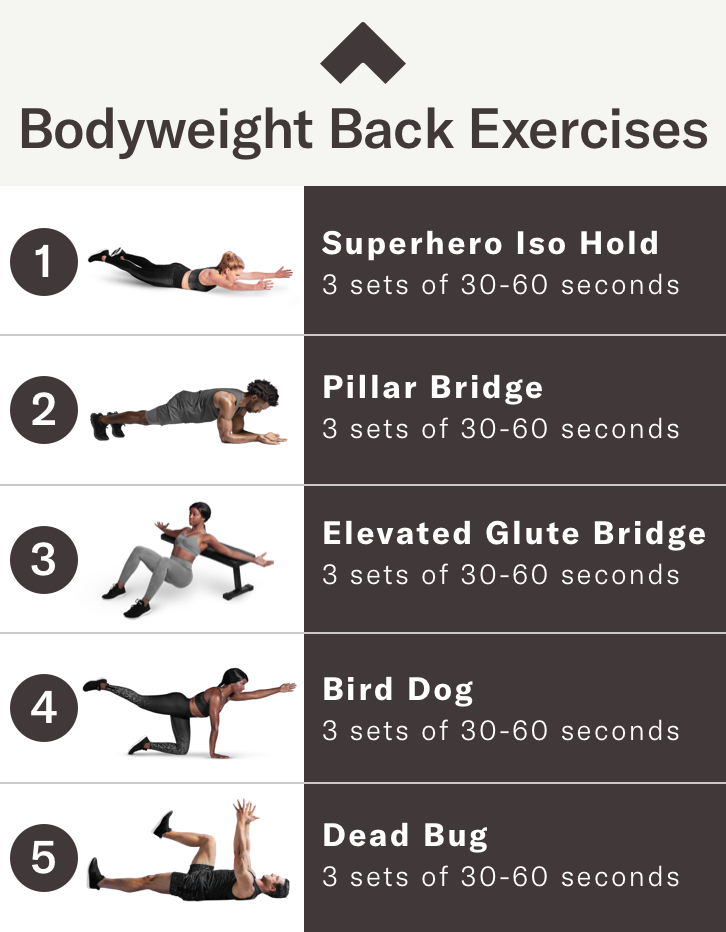
Adding core exercises to your daily routine has many benefits. A strong core makes everyday tasks easier, like bending, lifting, or sitting. It also helps improve your posture, reducing fatigue during simple actions.
The main muscles for daily activities are the erector spinae, rectus abdominis, and obliques. These muscles work together for better mobility and stability. The pelvic floor, diaphragm, glutes, and multifidus also support your core.
Beginners can start with simple exercises like:
- Bridge
- Crunch
- Supine toe tap
- Bird Dog
- Bicycle crunch
For more challenge, try the plank, warrior crunch, and bird dog with elbow to knee.
Advanced exercises like mountain climbers, side planks with rotation, or the Turkish get-up engage deeper muscles. These exercises help prevent lower back pain and keep your posture right.
Regular deep core exercises improve breathing, boost athletic performance, and lower injury risks. Many people do these exercises 2 to 3 times a week to improve stability and connect with these key muscles.
It’s a good idea to work with a personal trainer. They can tailor your workout plan to fit your fitness level and goals.
| Muscle Group | Role in Daily Activities |
|---|---|
| Erector Spinae | Supports back stability and movement |
| Rectus Abdominis | Facilitates flexion and balance |
| Obliques | Aids in twisting and stability |
| Pelvic Floor | Provides support to pelvic organs |
| Diaphragm | Enhances breathing control |
| Glutes | Supports hip movement and lower back |
Safety Tips for Performing Core Strengthening Exercises
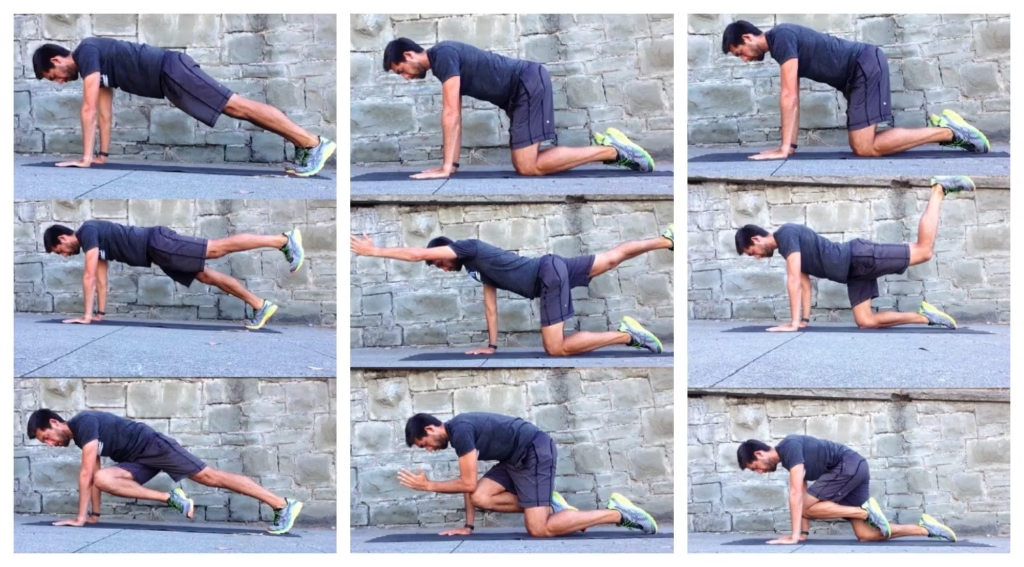
Putting core exercise safety first is key for good training and avoiding injuries. When doing core exercises, focus on using the right techniques every time. Always start with a warm-up to get your muscles and joints ready for action.
Use safe exercise techniques and keep your form right to keep your body aligned. This helps prevent strain and makes your workouts more effective. If you feel pain, it’s best to change the exercise or stop.
Think about getting advice from a fitness expert, especially if you have injuries or back problems. Core exercises can make you stronger, improve your posture, and increase your mobility. But doing them without guidance can lead to injury. Always listen to your body and don’t push through pain.
To help prevent injuries, follow these tips:
- Do a dynamic warm-up to get your blood flowing and muscles ready.
- Do 10 reps per set for most exercises, but adjust if needed.
- Add stretching routines, holding each stretch for 30 seconds to improve flexibility.
- Slowly move on to harder exercises as you get better at the basics.
- Keep your breathing steady to avoid high blood pressure.
- Get advice from a doctor for specific tips on back injuries.
- Change exercises if they cause pain or discomfort.
Following these tips will help you build core strength safely and effectively.
Integrating Core Exercises into Your Weekly Workout
To make the most of your core exercises, planning is key. Start with a plan that works your core all week. Include exercises like the Bird Dog, Dead Bug, and Glute Bridge two to three times a week for strength.
Warm up with breathing drills and isometric exercises before your workout. Then, do squats, deadlifts, and standing presses to work on bracing and stability. These exercises help you resist forces from different directions.
After strength training, focus on core exercises. These sessions shouldn’t get in the way of your main workout goals. Adding 15-20 minutes of core-only workouts each week can boost your strength and work capacity. Try planks, flutter kicks, and swimming superman exercises.
Changing up your core routine challenges your muscles from different angles. A strong core helps with strength, posture, balance, and avoiding injuries. Here’s a sample workout plan:

| Day | Warm-up | Main Workout | Core Focus |
|---|---|---|---|
| Monday | Breathing drills | Squats, Deadlifts | Bird Dog, Plank |
| Wednesday | Isometric holds | Standing Press | Dead Bug, Glute Bridge |
| Friday | Dynamic stretching | Push-Ups, Lunges | Flutter Kicks, Russian Twists |
| Saturday | Light jog | Cardio | Swimming Superman |
Before starting any new exercise, talk to a healthcare professional, especially if you have back issues. A mix of strength and core training can lead to long-term health benefits. It supports a strong core and an active life.
Additional Back Exercises to Consider for Core Enhancement
To strengthen your back muscles and boost core stability, try different exercises. Include planks, side planks, and supermans in your workout. These exercises target various core areas, helping to build strength.
A mix of exercises helps improve how you move. It makes your core strong, lowering the chance of pain or injury. Adding new core workouts keeps your routine exciting and challenging.
Dr. Stuart McGill says it’s key to keep the hips and thoracic spine mobile. If not, the lower back might move in ways that cause pain. So, it’s vital to do exercises that help with strength and mobility.
Here are some exercises you should think about:
- Planks: Work the whole core and boost endurance.
- Side Planks: Focus on the obliques for better spinal stability.
- Supermans: Strengthen the lower back and glutes, and keep the spine aligned.
Changing up your workout routine regularly helps you strengthen your back muscles well. Using these varied movements can greatly improve your core strength and overall performance.
| Exercise | Benefits | Key Muscles Targeted |
|---|---|---|
| Planks | Enhances core endurance | Rectus abdominis, transverse abdominis |
| Side Planks | Improves lateral stability | Obliques, quadratus lumborum |
| Supermans | Strengthens lower back and glutes | Erector spinae, gluteus maximus |
The Importance of Consistency in Core Training
Sticking to a core exercise routine is key for strength and fitness. Many people find it hard to keep up with workouts, which slows down their fitness goals. Training regularly over time is crucial for seeing real gains in strength, losing fat, and getting fitter.
Instead of doing intense workouts only sometimes, being steady helps you make steady progress. This approach also boosts your core stability. It’s important to keep moving, even on days you don’t feel like it.
Many people jump into intense workouts, then stop. This pattern doesn’t lead to the results they want. It’s better to keep doing something, even a little, every day. This keeps you on track with your exercise plan and helps you succeed over time.
Even when life gets busy, cutting back on workouts isn’t the answer. Training just two times a week can still make a difference. Seeing the value in being consistent helps you meet your fitness goals and improves your health. Regular practice leads to lasting benefits for your core and overall fitness.









